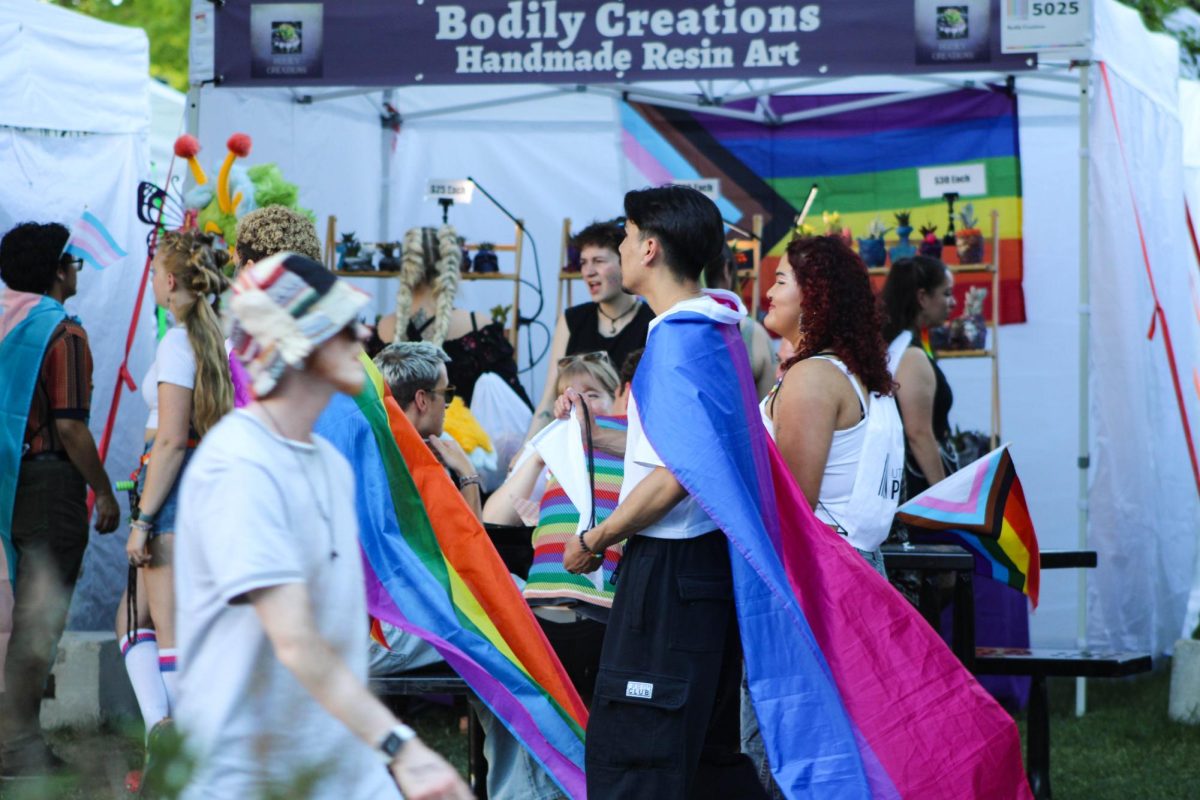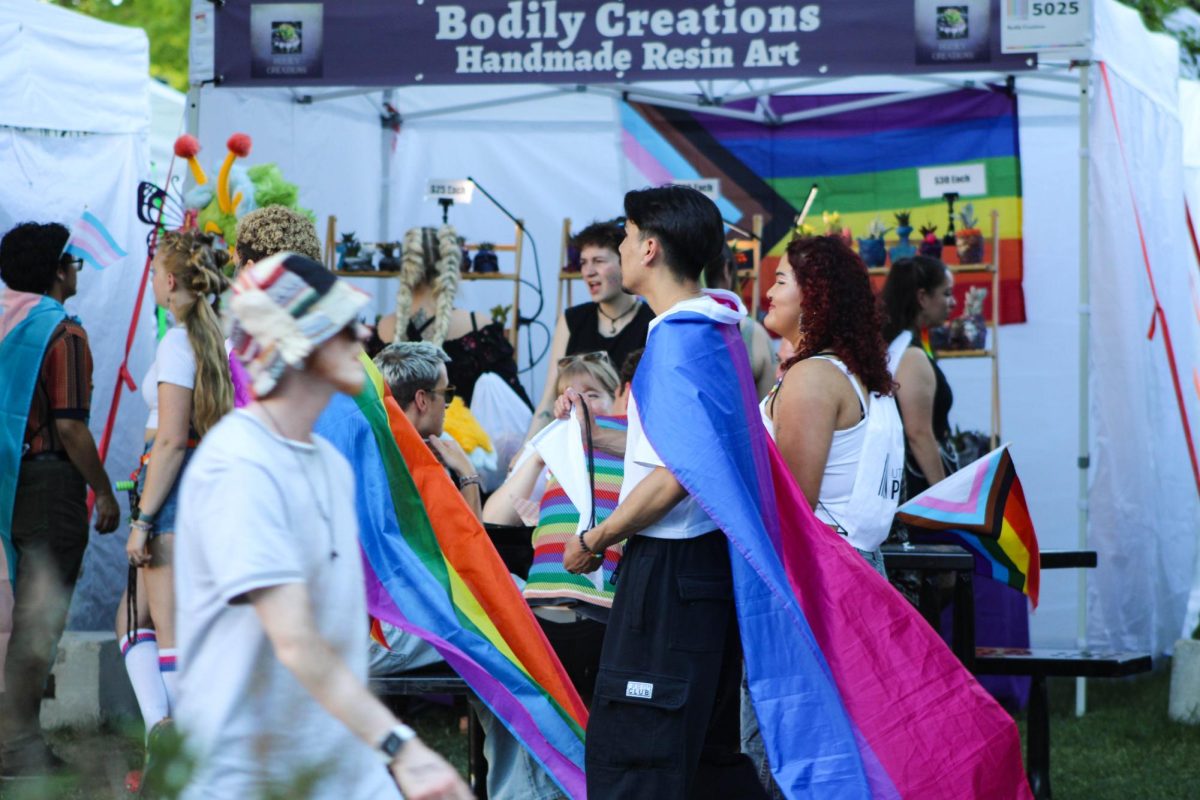
“I had what I thought was a near death experience in March, which ended up being a panic attack that made me reevaluate my life. I realized I didn’t want to be in an office anymore. I wanted to be outside. I wanted to be an urban farmer, and after realizing this was what I wanted to do, I had to figure out how to do it.
Weber State was the way to do that. I am getting my bachelors in Integrated Studies. I have picked three minors and I’m basically building my own degree which includes zoology with a focus on entomology, botany, and entrepreneurship.
I always loved nature, and I started looking into beekeeping this February. There’s a beekeeping shop on Washington Boulevard, so I took a class and placed my order for my bees. The first order comes with about 10,000 bees and a queen, and it’s about $500 to get started. Once you are started, the bees pretty much take care of themselves.”
So tell me about the bees.
“Honey bees are starting to be endangered, and they provide 1/3rd of our food, so it’s becoming a big problem. One reason they are becoming endangered is because people are starting to spray for the Zika virus, and the chemicals are killing the bees. The only surviving honey bee colonies right now are backyard colonies.
Honey bees are more of a brown color versus a wasp that is yellow. They are fuzzy, and they have a low buzz. They won’t bother you unless you bother them first.
There is only one queen in the entire hive, and she stays inside the hive her whole life unless the bees have to move for some reason. All she does is lay eggs. She doesn’t do anything for herself, like basic feeding and cleaning up after herself — her worker bees do everything.
The bees don’t like dark colors, so they probably think I’m a bear in my black shirt, so if I hang out close to them for too long, the bees will start getting curious, and that’s a bad thing. The bees will then start getting aggressive.”
How much honey do you get?
“Each season, you can get anywhere between 100-150 pounds of honey, and the season lasts from about March to October. You can harvest the honey once about mid-summer and then once in the fall. I currently have one hive, and inside my hive right now is about 60,000 bees including the queen.”







